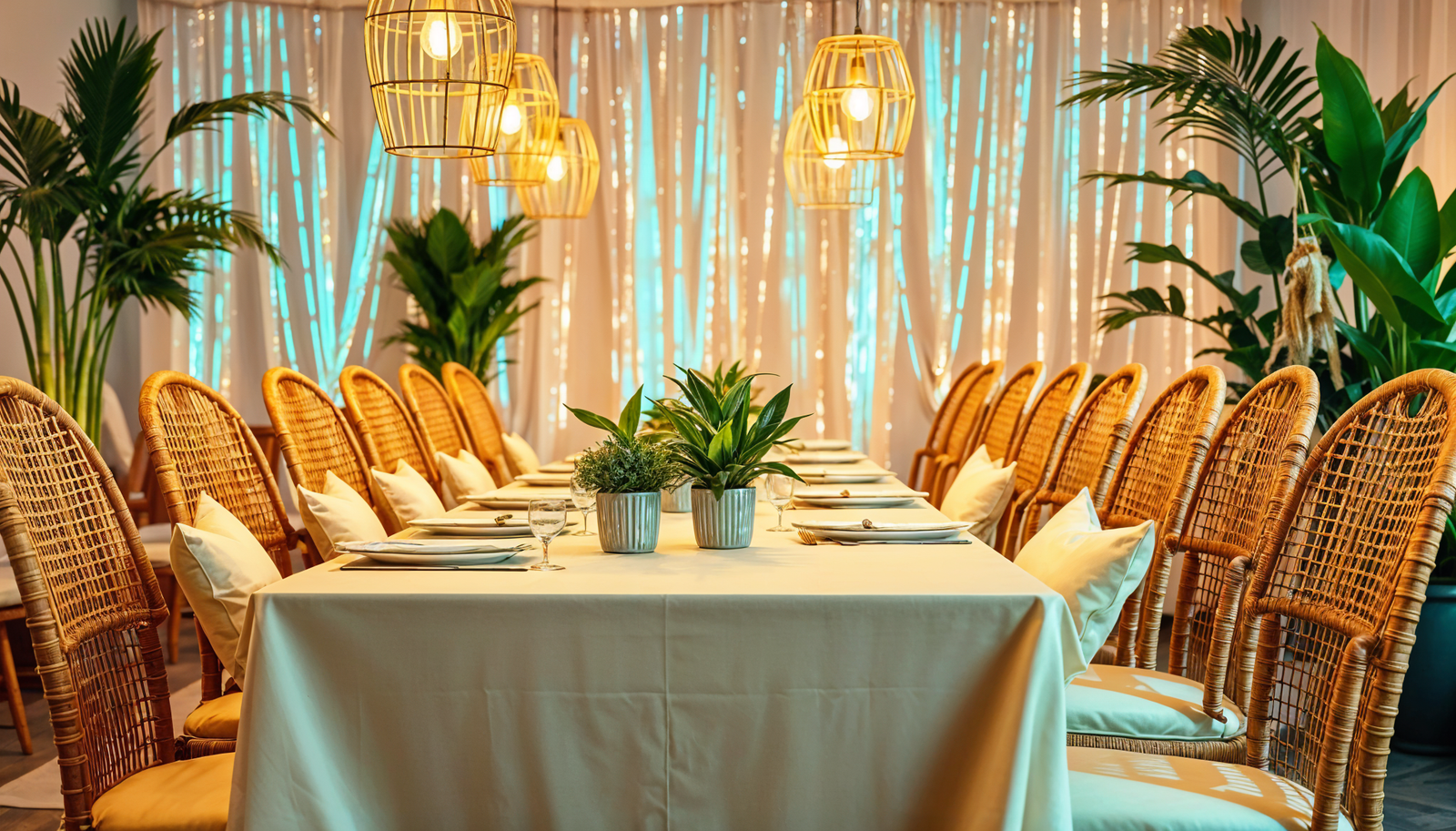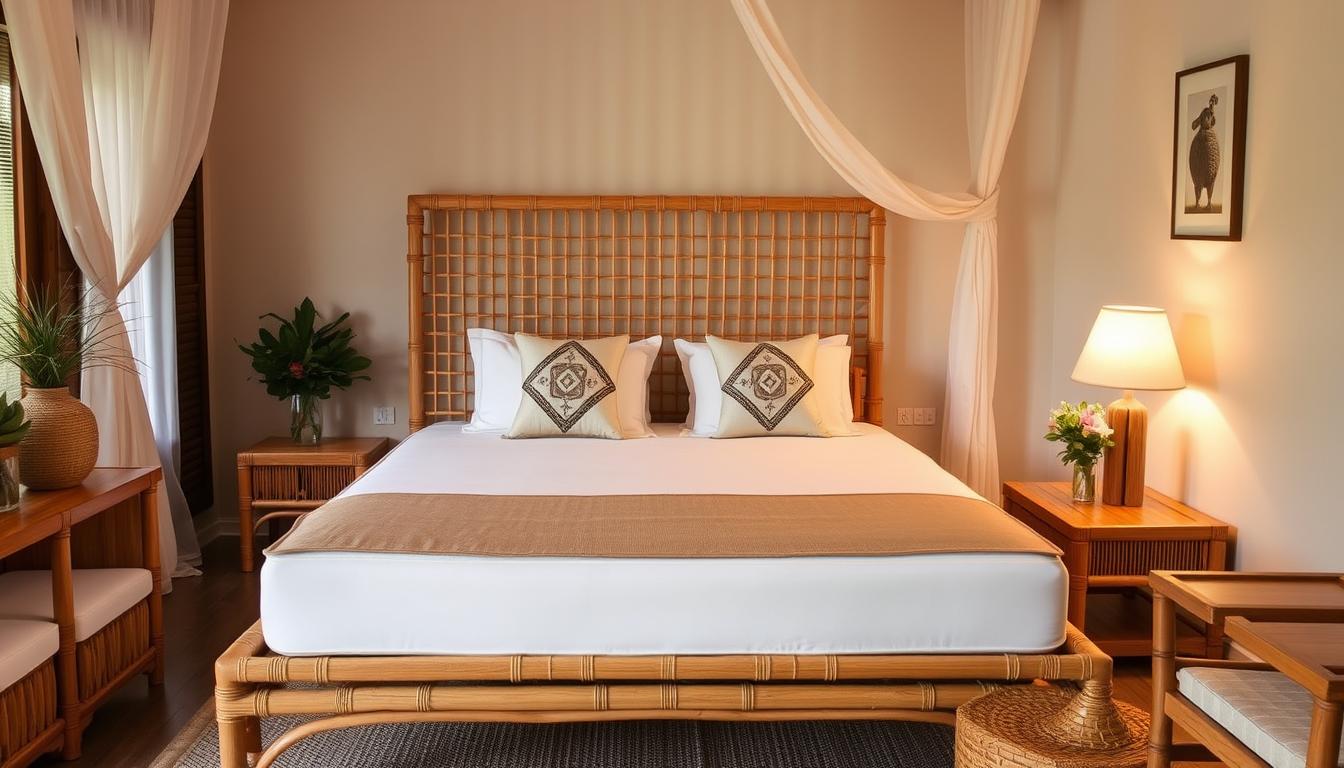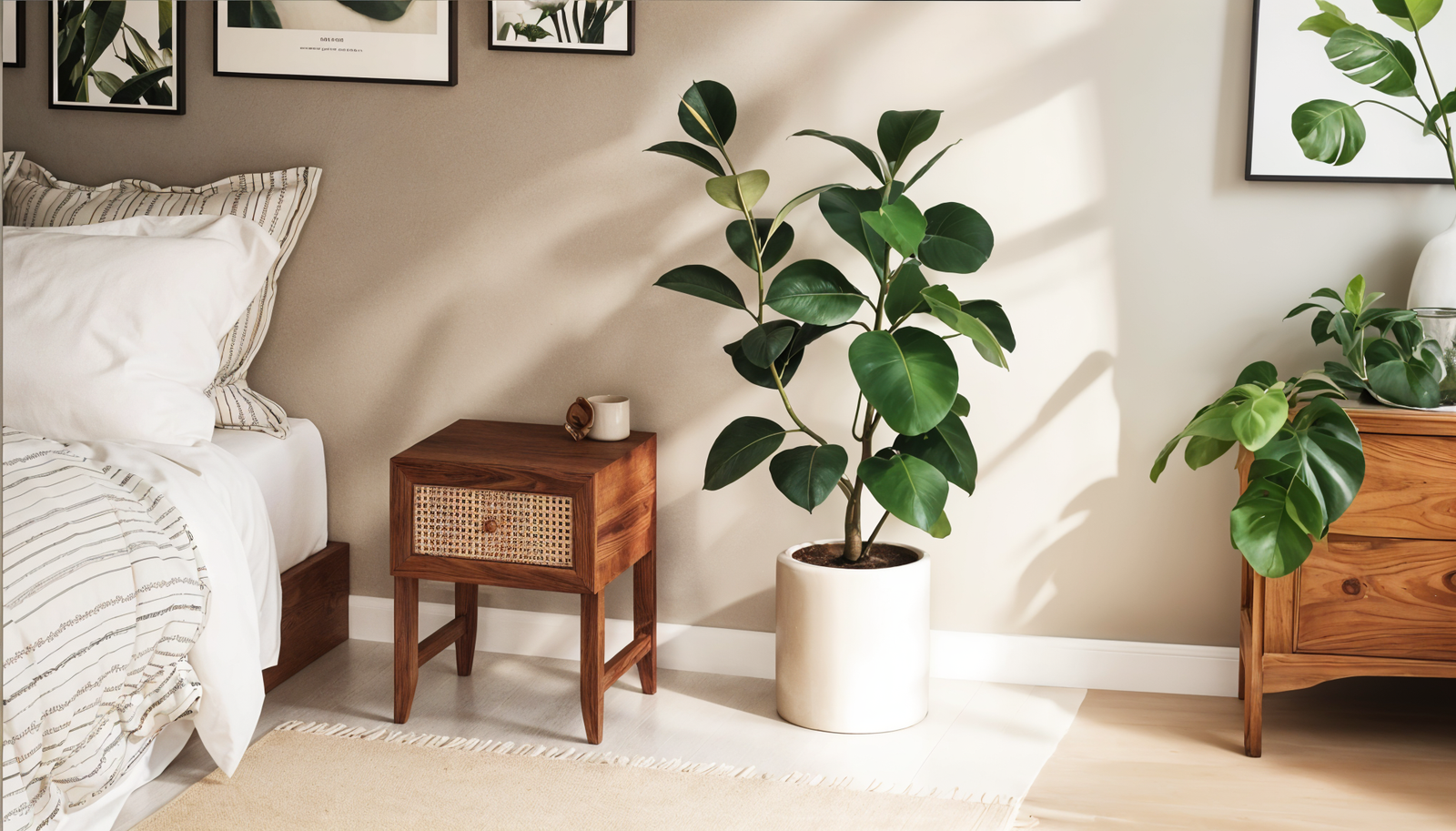🤍 Unmatched Quality, Authentic Craftsmanship
🤍 Unmatched Quality, Authentic Craftsmanship
🤍 Unmatched Quality, Authentic Craftsmanship
Welcome to our guide on modern Japandi white wall ideas for creating chic and stylish spaces.
Japandi design is a beautiful fusion of Scandinavian simplicity and Japanese minimalism, resulting in a contemporary and harmonious interior style.
By incorporating white walls into your Japandi-inspired space, you can create a clean and serene backdrop that allows other design elements to shine.
In this article, we will provide you with inspiration and tips for achieving a modern Japandi look with white walls, helping you create a chic and inviting atmosphere in your home.

In this section, we will explore the minimalist beauty of Japandi decor and how it seamlessly combines japanese and scandinavian design principles.
Japandi decor is a harmonious fusion of Scandinavian design and Japanese aesthetics, resulting in a unique and captivating interior style.
Scandinavian design is known for its clean lines, functional simplicity, and minimalism.
Japanese design, on the other hand, focuses on tranquility, natural materials, and a deep respect for craftsmanship.
The combination of these two design philosophies creates a harmonious balance between form and function, resulting in clean and serene living spaces.
Japandi decor embraces the understated elegance of Scandinavian design while incorporating the timeless beauty of Japanese design.
This scandinavian-japanese fusion captures the essence of both styles, resulting in an interior aesthetic that is serene, sophisticated, and inviting.
A crucial aspect of Japandi decor is the creation of a cohesive color scheme.
The color palette in Japandi design draws inspiration from both Scandinavian and Japanese traditions, emphasizing a calm and tranquil ambiance.
Incorporating a Scandinavian neutral color palette, which includes soft neutrals, muted pastels, and warm woods, with the refined color palette of Japanese design, which features earthy tones, natural hues, and accents of bold colors, allows for a harmonious blending of colors in Japandi interiors.
The use of a cohesive color scheme in Japandi design helps to create a sense of balance and unity throughout the space.
By using colors that complement each other, a visually pleasing environment is achieved, promoting a feeling of tranquility and relaxation.
Neutral tones play a crucial role in Japandi interiors, adding to the overall sense of calm and simplicity in the space.
Shades of white, beige, gray, and brown are commonly used to create a neutral backdrop for Japandi design elements.
Neutral tones not only provide a clean and timeless aesthetic but also enhance natural light and make the space feel more open and spacious.
They allow other design elements, such as textures, materials, and furniture, to take center stage and contribute to the overall serenity and balance of the space.

| Scandinavian Design | Japanese Design |
|---|---|
| Clean lines | Tranquility |
| Functional simplicity | Natural materials |
| Minimalism | Respect for craftsmanship |
| Soft neutrals | Earthy tones |
In Japandi design, white walls serve as a soothing canvas for creating serenity in your space.
These minimalist white walls provide a tranquil and uncluttered backdrop that allows other design elements to shine.
Whether you are looking to transform your living room, bedroom, or any other room in your home, incorporating modern Japandi white walls can bring a sense of calm and peacefulness to your environment.
One way to incorporate white walls into your Japandi-inspired space is by creating a monochromatic color scheme.
Stick to different shades of white, from pure white to off-white, to achieve a cohesive and harmonious look.
You can also play with texture by opting for textured paint or by adding wall panels to add visual interest and depth to your white walls.

When it comes to choosing furniture and decor, select pieces that complement the minimalist design of Japandi.
Light-toned woods, such as oak or ash, work well with white walls, creating a warm and natural aesthetic.
Keep the furniture low-profile and simple, focusing on clean lines and functionality.
To enhance the serenity of your Japandi-inspired space, incorporate natural elements such as indoor plants, bamboo accents, or Japanese-inspired artwork.
These elements will bring a touch of nature into your environment and create a connection to the peacefulness of the outdoors.
Overall, modern Japandi white walls provide a serene foundation for creating a calm and harmonious atmosphere in your space.
Their minimalist design allows you to showcase the beauty of other elements and design choices.
By incorporating Japandi white walls into your home, you can achieve a sense of serenity that promotes well-being and relaxation.
In Japandi design, integrating textures is a crucial element for adding depth and warmth to your space.
By incorporating textured walls, unique paint techniques, and innovative materials, you can create a visually captivating and harmonious aesthetic.
These textures not only provide visual interest but also evoke a sense of comfort and tranquility in your Japandi-inspired environment.
One way to incorporate textures is through subtly raised surfaces, such as textured wallpapers or textured paint finishes.
These create a tactile experience and add dimension to the walls, adding depth to the overall design.
Another option is to use bolder textures, such as exposed concrete or natural stone, as a dynamic focal point in your space.

When selecting materials for your Japandi-inspired space, consider incorporating natural elements such as wood and bamboo.
These materials not only add texture but also bring a sense of warmth and organic beauty to the design.
Additionally, you can experiment with innovative materials like textured tiles or woven wall coverings to create a unique and visually appealing look.
By thoughtfully integrating textures into your Japandi design, you can elevate the overall ambiance of your space and create a harmonious environment that exudes comfort and tranquility.
In Japandi design, selecting the right furniture is essential to enhancing the beauty of white walls and creating a harmonious interior.
Here, we will explore strategies for choosing furniture that complements Japandi white walls and contributes to the overall aesthetic.
One effective way to enhance Japandi white walls is by selecting furniture that incorporates contrasting light woods and darker accents.
This contrast adds visual interest and depth to the space while maintaining the minimalist design aesthetic.
Consider furniture pieces crafted from Scandinavian woods, such as oak or birch, which showcase the natural beauty of light wood tones.
These can be paired with darker accents, like black metal frames or dark-stained wood elements, to create a striking contrast against the white walls.

Another key aspect of Japandi design is the use of low-profile furniture.
This style emphasizes simplicity and a sense of openness, allowing the white walls to take center stage.
Opt for furniture pieces with clean lines and minimalist designs. Low-profile sofas, coffee tables, and dining sets fitted with slender legs create a light and airy feel.
This not only enhances the Japandi ambiance but also ensures that the furniture doesn't overpower the white walls.
By carefully selecting furniture that incorporates contrasting light woods and darker accents, as well as opting for low-profile pieces, you can achieve a cohesive and visually appealing Japandi design that beautifully enhances the serene backdrop of white walls.
In Japandi design, accessories are essential to completing the overall aesthetic and adding character to your space.
They play a vital role in enhancing the simplicity of Japandi design while adding visual interest and personal style.
Here are some ideas and tips for curating minimalist accessories that perfectly complement your Japandi white walls:
Carefully curating accessories for your white walls can elevate your Japandi design to new heights.
Remember to strike a balance between minimalism and personal expression, creating a space that reflects your style and embraces the serene beauty of Japandi.
Artwork is an essential element of Japandi design, adding character and visual interest to the space.
When selecting art for your Japandi-inspired gallery, it's important to choose pieces that reflect the philosophies of Japandi design.
Look for artworks that embody the simplicity, nature-inspired motifs, and harmonious balance synonymous with Japandi aesthetics.
Scandinavian art often features clean lines, minimalistic compositions, and a focus on natural elements, such as landscapes or botanical subjects.
Japanese art, on the other hand, emphasizes the beauty of imperfection, with concepts like wabi-sabi embracing rusticity, asymmetry, and the passage of time.
Incorporating both Scandinavian and Japanese art can further enhance the Japandi ambiance of your space.
Consider artwork that evokes a sense of calm, tranquility, and balance. Paintings, prints, and photographs with muted colors, organic shapes, and natural textures are excellent choices.
Abstract compositions that capture the essence of both Scandinavian and Japanese aesthetics can also complement the Japandi style.
Displaying artwork in a thoughtful and deliberate manner can maximize its impact in your Japandi-inspired space. Here are some tips:
By carefully choosing art that reflects Japandi philosophies and thoughtfully displaying it in your space, you can create a captivating gallery that complements your white walls and enhances the overall Japandi design aesthetic.
In order to fully enhance the beauty of Japandi white walls, the right lighting design is essential.
Incorporating natural light and ambient fixtures can help create a warm and inviting atmosphere that perfectly complements the minimalist elegance of Japandi design.
When it comes to incorporating natural light, maximize the use of windows and skylights to bring in as much natural daylight as possible.
This will not only brighten up the space, but also enhance the sense of harmony and connection with the outdoors.
Sheer curtains or blinds are ideal for filtering the light and maintaining privacy while still allowing in the soft natural glow.
Ambient fixtures, such as pendant lights or wall sconces, are another important element in Japandi lighting design.
Opt for fixtures that have organic shapes and natural materials, like wood or paper.
These fixtures should provide a soft and diffused illumination that complements the white walls without overpowering them.
Consider incorporating dimmers to adjust the lighting intensity and create different moods throughout the day.
Furthermore, lighting can be used strategically to highlight specific Japandi elements and create focal points in your space.
Accent lighting can be directed towards architectural features, artwork, or decorative objects to draw attention and create visual interest.
In Japandi design, it is important to keep the lighting fixtures themselves simple and understated, allowing the focus to be on the highlighted elements.
By carefully considering the lighting designs, you can enhance the serene and minimalist beauty of Japandi white walls, creating a harmonious and inviting space that truly embodies the essence of Japandi design.
Now that you have read the above article, maybe you still have a couple of questions on this topic, so we will answer these questions below.
Japandi design is a fusion of Scandinavian and Japanese aesthetics, combining the simplicity and minimalism of both styles to create a unique and harmonious interior design style.
White walls are popular in Japandi design because they provide a clean and serene backdrop that allows other design elements to shine and create a calm and peaceful atmosphere.
You can add texture to your Japandi white walls by using textured paint, unique paint techniques, or innovative materials.
These elements will add depth and warmth to your space, creating a visually captivating and harmonious Japandi aesthetic.
Furniture made from light wood with darker accents works well with Japandi white walls.
The contrasting colors create a visually balanced and appealing look.
Additionally, incorporating low-profile furniture contributes to the overall Japandi ambiance.
In conclusion, incorporating Japandi white walls into your space can transform it into a chic and modern environment.
By combining the simplicity of Scandinavian aesthetics with the elegance of Japanese minimalism, Japandi design creates a unique and harmonious interior style.
The use of white walls provides a clean and serene backdrop for other design elements, allowing them to shine and creating a sense of tranquility.
Throughout this article, we explored various aspects of Japandi design and how it can be achieved with white walls.
We discussed the harmony of Scandinavian and Japanese design principles, the importance of cohesive color schemes and neutral tones, and the integration of textures for depth and warmth.
We also delved into selecting furniture, curating accessories, cultivating a gallery of Japandi wall art, and using lighting designs to complement the white walls.
Japandi design offers timeless beauty and enduring appeal in contemporary home decor.
Its minimalist approach, combined with the use of white walls, creates a space that is both stylish and serene.
Whether you're seeking a calm sanctuary or a sophisticated atmosphere, incorporating Japandi white walls is a surefire way to achieve a chic and modern space.
So why wait? Embrace the elegance of Japandi design and transform your home today.


